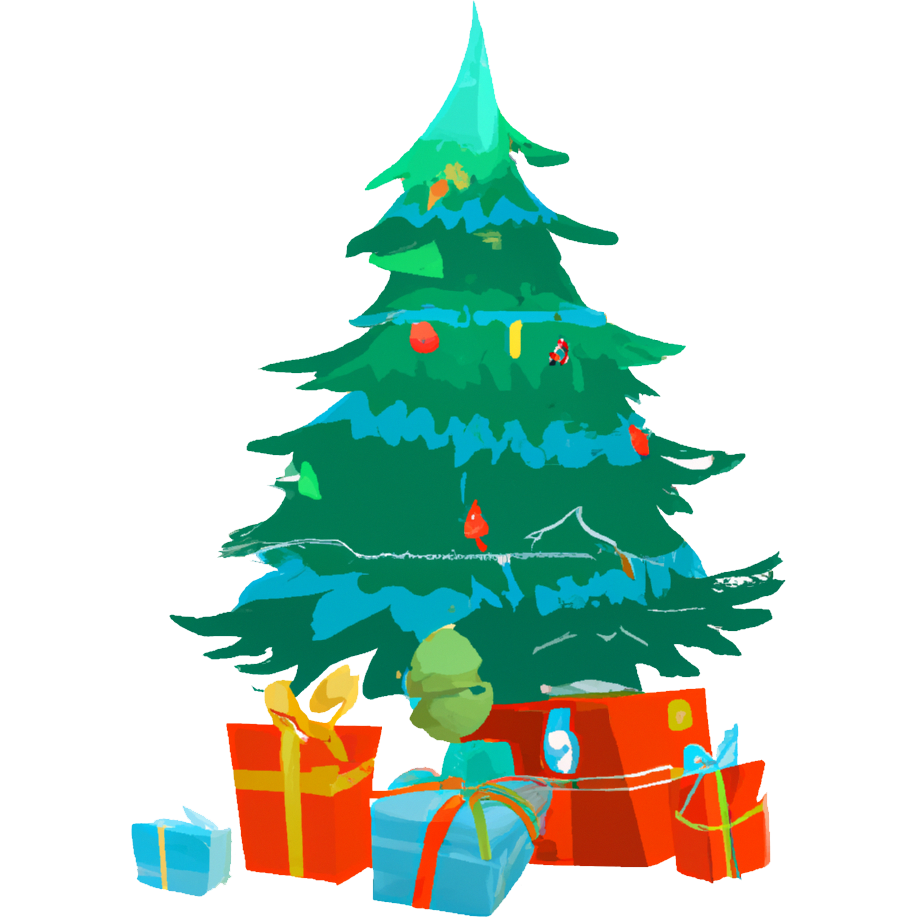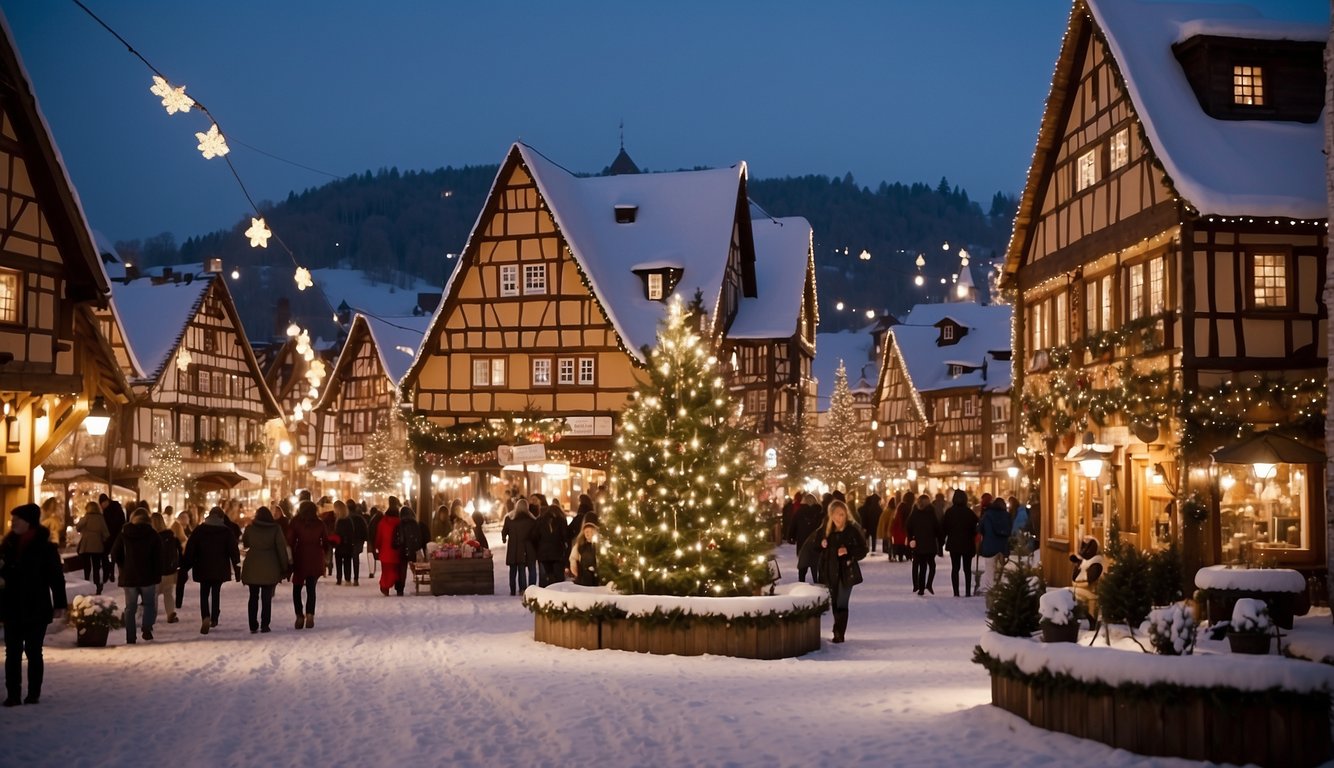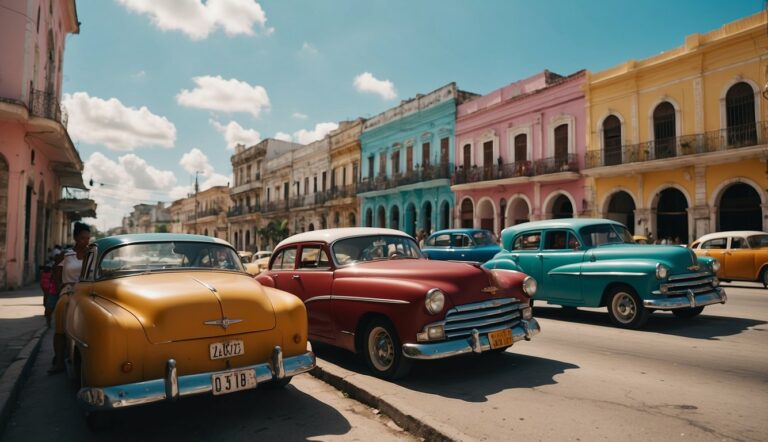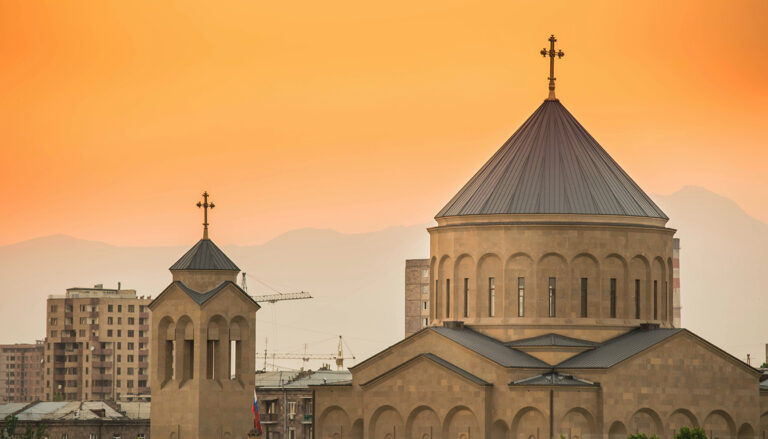Christmas in Germany: Markets, Customs, and Celebrations
Christmas in Germany, or Weihnachten, is a festive and deeply rooted cultural event celebrated with a blend of religious significance and regional traditions.
The season begins with Advent, leading to the highlight of the celebration—the three-day holiday starting from Christmas Eve to the second day of Christmas on December 26.
Germans traditionally prepare in the weeks leading up to Weihnachten with Advent calendars and wreaths, counting down the days with a mix of anticipation and reverence.
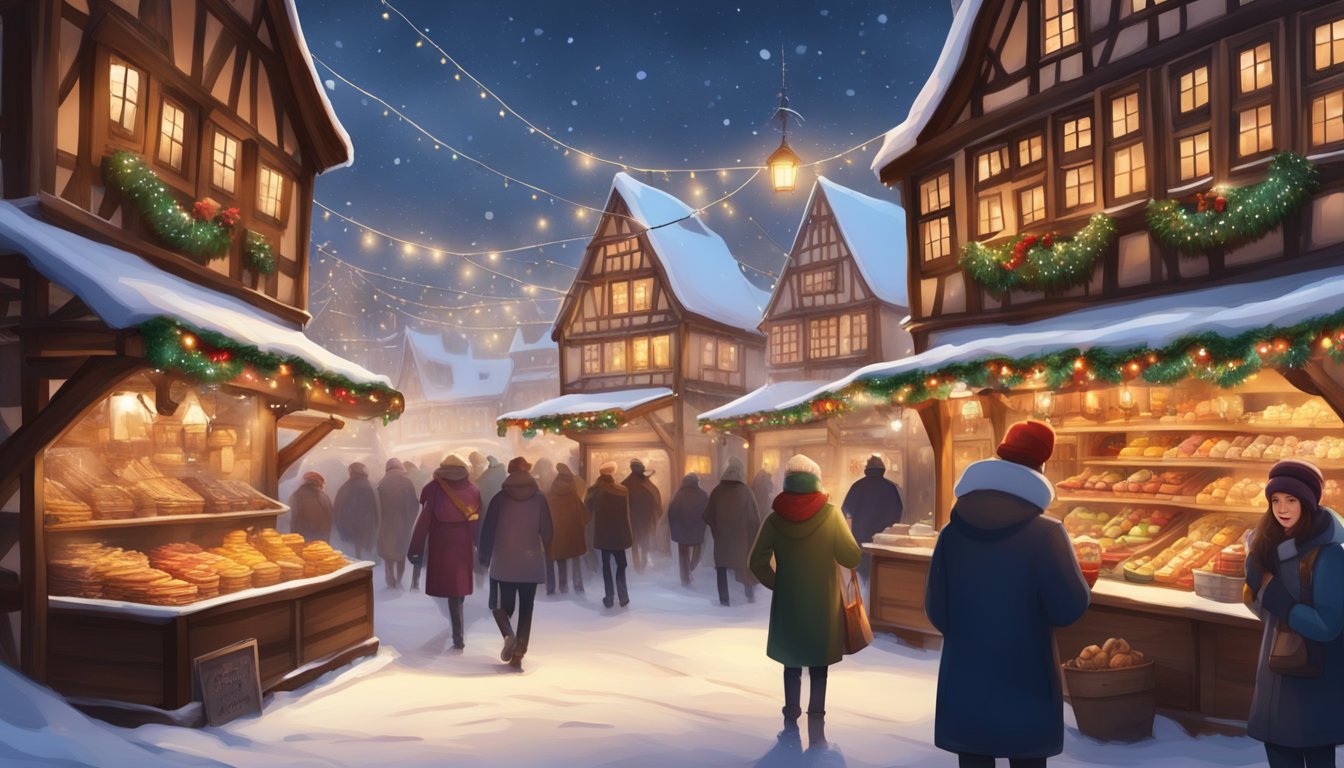
The German Christmas market, or Christkindlmarkt, is a defining feature of the season. It offers a delightful array of handcrafted items, festive foods, and warm drinks.
Streets and homes are adorned with decorations, with the Christmas tree holding a place of honour in family homes.
Gifts are exchanged with the Christkind, a traditional Christmas figure in many German-speaking areas, often depicted as the gift-bringer, especially in southern and western regions.
Authentic culinary delights play an essential role during the holiday, with dishes such as Stollen—a fruit bread with nuts, spices, and dried fruit, dusted with powdered sugar—serving as staples.
Gingerbread and potato salad are also traditional fare, embodying the rich culinary customs that vary from region to region.
Through such practices, Christmas in Germany encapsulates a period of warmth and community characterized by unique regional customs and universal festive cheer.
Historical Background
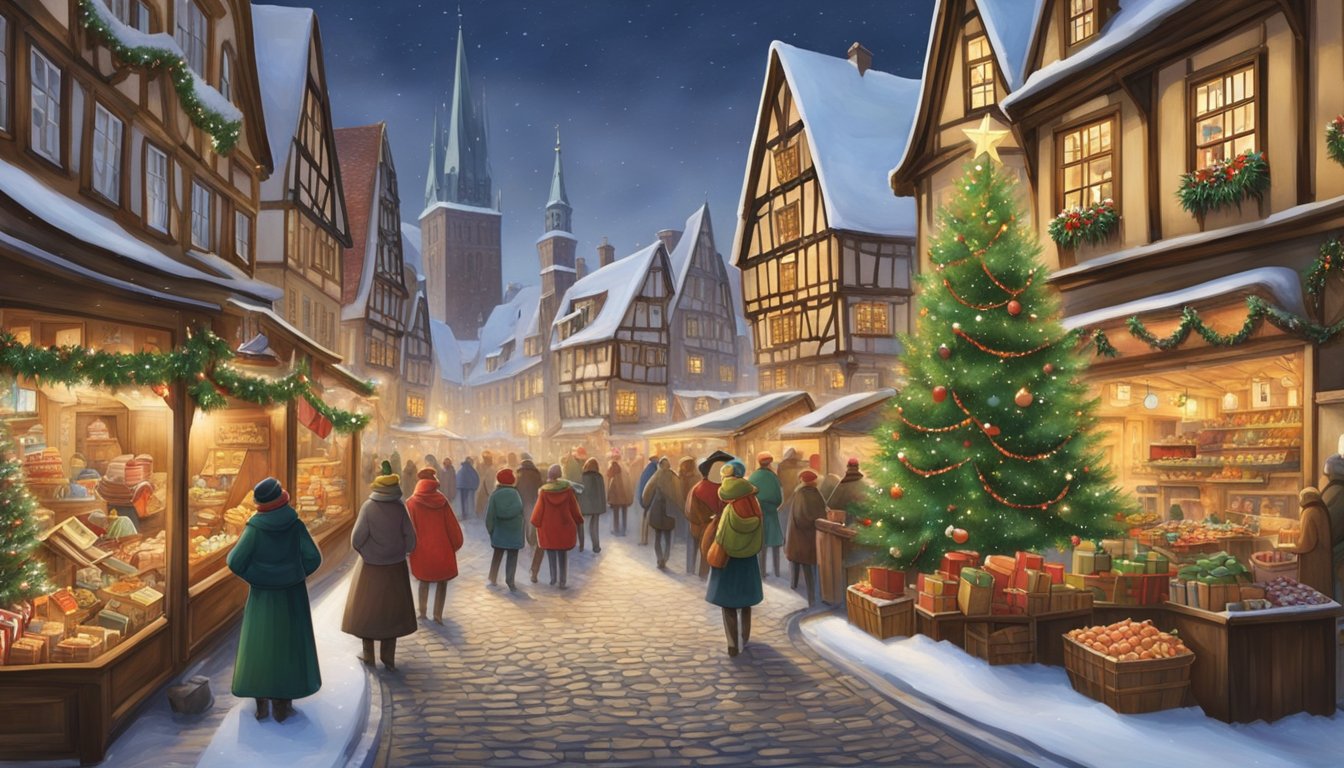
The celebration of Christmas in Germany has evolved significantly from its medieval origins and has been influenced notably by the Protestant Reformation in the 16th century. Prominent figures, such as Martin Luther, played a significant part in shaping the traditions of the German Christmas today.
Medieval Origins and Traditions
In the Middle Ages, German Christmas was celebrated in connection with religious events and saints.
German children received gifts from St. Nicholas on December 6, a distinct occasion from Christmas.
These medieval traditions were deeply embedded in the church’s liturgical year, which played a central role in people’s lives during this era.
Influence of Martin Luther
In the 16th century, the Protestant Reformation led by Martin Luther introduced new practices to the observance of Christmas in Germany.
Luther favoured a Christ-centric approach to Christmas, moving away from the veneration of saints, which was prevalent in Catholic customs.
He is attributed with innovations fundamental to German Christmas, such as the introduction of lights on Christmas trees, which was said to represent the light of Christ.
Luther’s impact laid the groundwork for the evolution of a Christmas celebration more focused on family and the home.
Advent and Preparations

In Germany, the period leading up to Christmas is marked with distinct traditions, especially during Advent—a time of expectant waiting and preparation for the celebration of the Nativity of Jesus.
This period transforms homes and public spaces with specific decorations, and it is characterized by the significant use of Advent wreaths and calendars, which help count down the days until Christmas.
Advent Wreaths and Calendars
Advent wreaths (Adventskranz), typically made of evergreen branches, are a central symbol in German homes.
They feature four candles, one for each week of Advent, representing the increasing light coming into the world as Christmas approaches.
On each of the four Sundays before Christmas, a candle is lit, and family members often gather for a small devotion or song.
Advent calendars are another cherished custom.
These calendars come in various forms, from simple paper or cardboard with 24 doors or windows to elaborate wooden boxes with drawers or pockets.
The calendars often contain chocolates or other small treats revealed one day at a time, beginning on December 1st and leading up to Christmas Eve.
Some calendars replace sweets with Bible verses or small toys, emphasizing the anticipation of the Advent season.
Festive Decorations and Lighting
During Advent, festive decorations adorn houses, streets, and public spaces.
Ornaments and lights breathe life into the dark winter days.
It’s common for windows to be illuminated by the warm glow of candles and fairy lights, an inviting and cosy sight from the chilly outdoors.
Decorative stars, known colloquially as Herrnhuter Sterne, hang prominently in many windows, a practice stemming from the Moravian Church.
Lighting plays an essential role not only in homes but also in public spheres. Cities and towns are brightened by Christmas markets (Weihnachtsmärkte), where strings of lights and illuminated stands create a festive atmosphere.
These markets are often the hub of communal pre-Christmas activity, offering traditional crafts, foods, and the spirit of togetherness cherished during this season.
Traditional German Christmas Markets
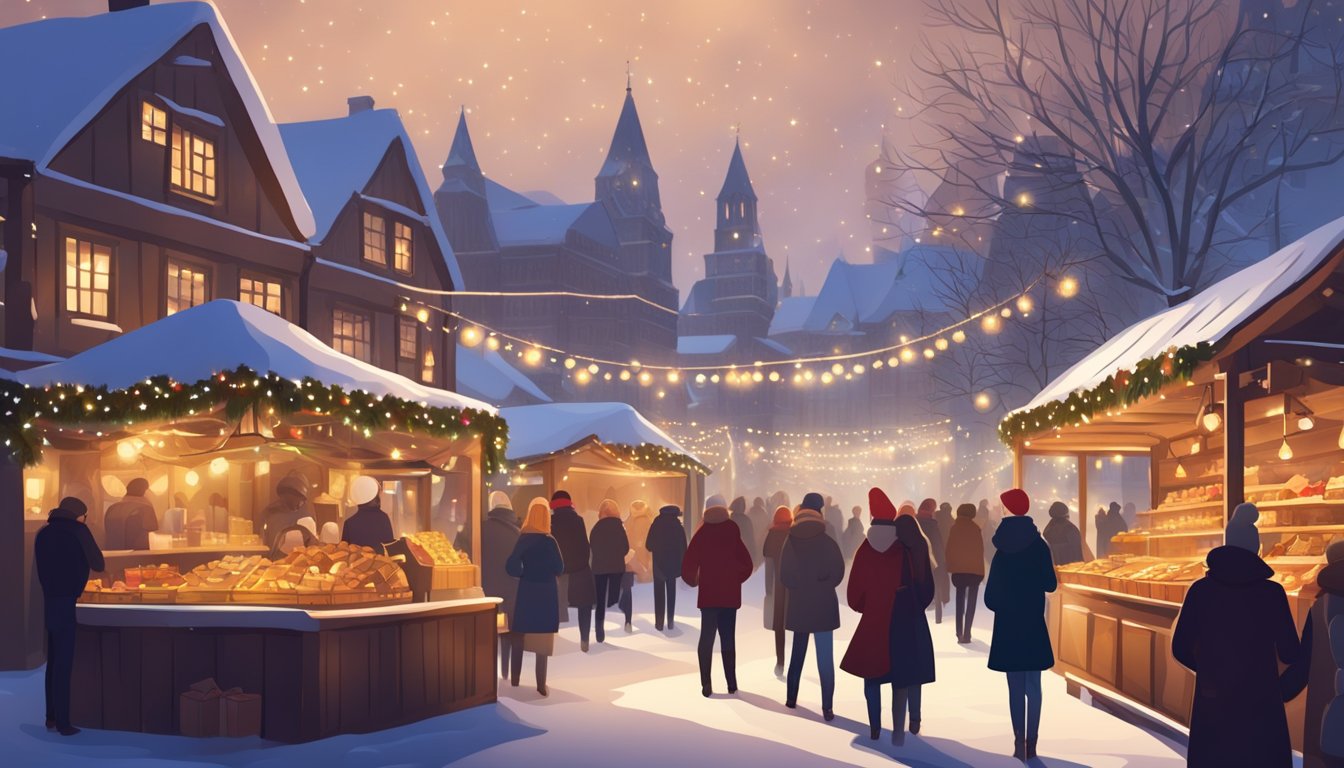
German Christmas markets, known for their festive atmosphere, are deeply rooted traditions that attract locals and visitors. They offer a variety of handcrafted goods, local specialities, and seasonal treats. The two most iconic are the Christkindlesmarkt in Nuremberg and the Striezelmarkt in Dresden.
Christkindlesmarkt in Nuremberg
Nuremberg hosts one of the world’s oldest and most famous Christmas markets, known as Christkindlesmarkt.
This market features over 200 stalls offering a wide array of handcrafted items, ornaments, and traditional gingerbread called Lebkuchen.
The market is typically opened by the “Christkind”, a symbolic gift-bringer in local folklore.
Striezelmarkt in Dresden
The Striezelmarkt in Dresden is the oldest Christmas market in Germany, dating back to 1434.
It’s renowned for its festive decorations and a large selection of traditional crafts, including the famous Dresden Pflaumentoffel, a figurine of dried prunes.
Visitors can also savour the renowned Stollen, a festive fruit bread, which reflects the market’s name, “Striezel,” an old term for this baked good.
Culinary Delights
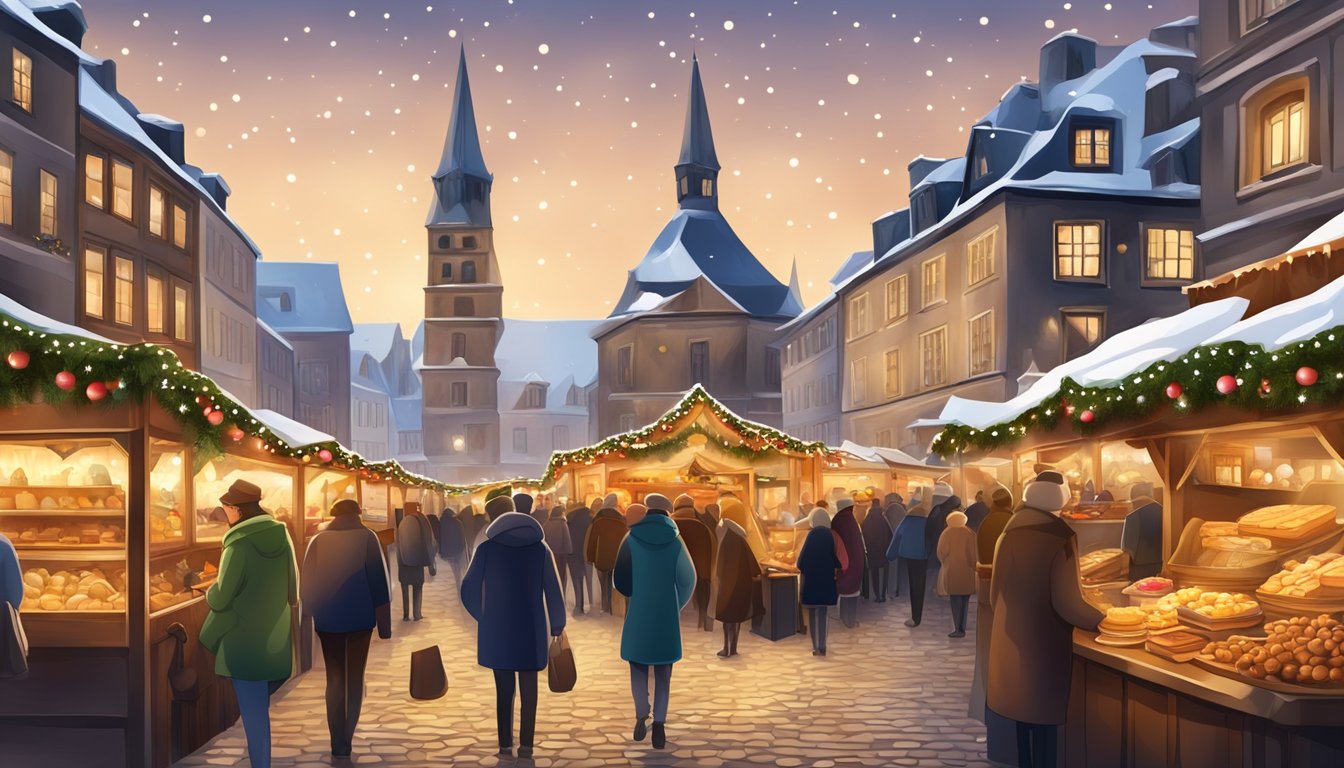
In Germany, traditional flavours take centre stage at Christmas, with an array of festive foods and beverages deeply rooted in the country’s cultural heritage.
Christmas Foods and Desserts
German Christmas Markets are famous for their vast selection of traditional foods and desserts.
At the heart of German Christmas dining is the Gänsebraten (roast goose), often accompanied by red cabbage and dumplings. This dish embodies the spirit of holiday feasts.
Sweet treats are equally important, with Stollen — a fruit bread with nuts, spices, and dried or candied fruit coated with powdered sugar or icing sugar — being a seasonal favourite.
Sweets and baked goods are a staple at Christmas, and ginger, honey, and almonds play significant roles in flavoring these delights.
Lebkuchen (gingerbread) and Plätzchen (Christmas cookies) are closely associated with German Yuletide. For a festive twist, they are often enhanced with cinnamon, orange zest, and rum.
Glühwein (mulled wine), served hot and spiced with cloves and cinnamon, is a popular choice, delivering warmth in the cold winter weather.
Walnut and chocolate-based sweets fill the markets, offering visitors a rich and indulgent experience.
Festive Beverages
Amid the wintry landscape, Germans enjoy a variety of festive beverages that are as much a part of Christmas as the food.
Mulled Wine (Glühwein) is a signature drink made from red wine and various mulling spices like cinnamon sticks, cloves, star anise, citrus, and sugar. A shot of rum or other spirits is often added for an extra kick.
Weinachtspunsch (Christmas Punch) typically involves a base of red wine or fruit juice enhanced with flavours of cinnamon, cloves, citrus fruits, and sugar, creating a warming and festive cocktail.
Christmas Eve and Day Celebrations
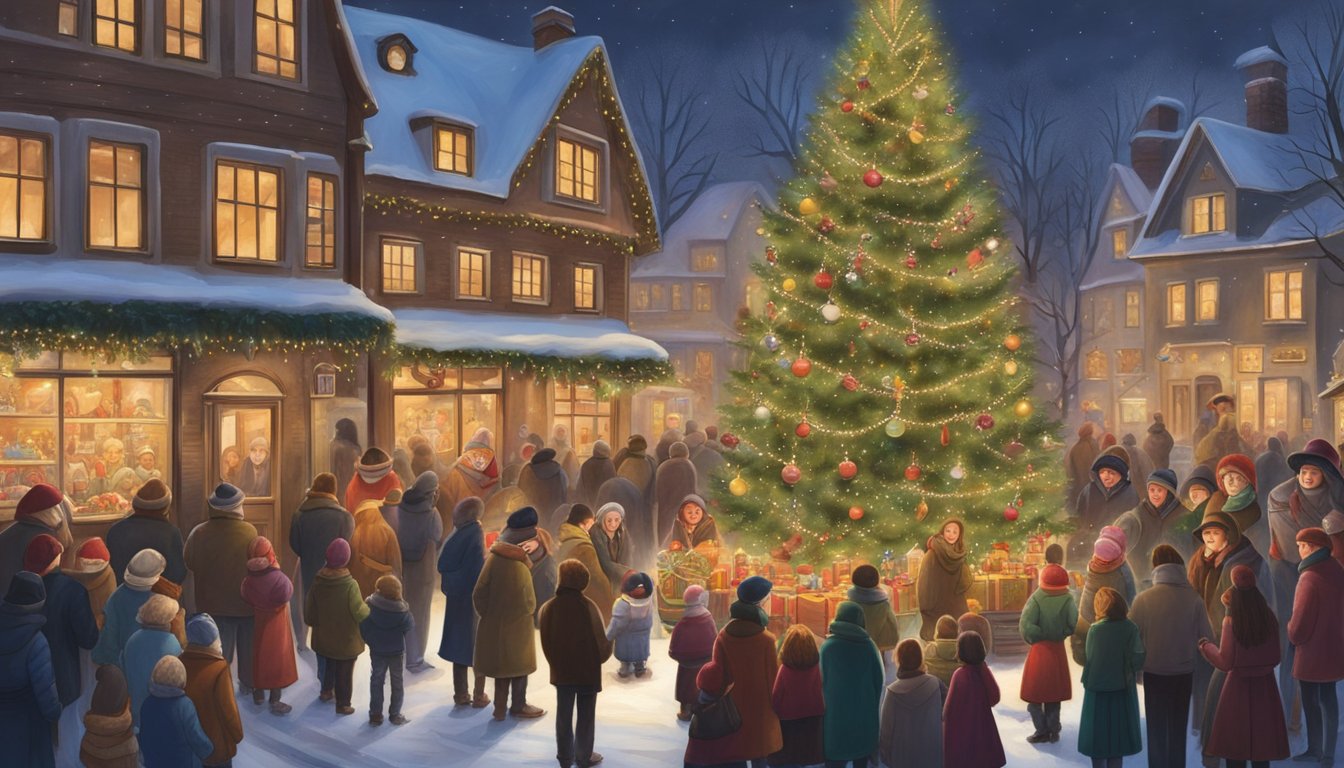
Christmas Eve and Day hold sacred importance in Germany. They encompass both religious solemnity and warm family celebrations. Traditional activities these days range from attending church services to intimate family gatherings.
Gift Giving and Family Time
On Christmas Eve, commonly called Heiligabend in Germany, families come together to exchange gifts.
It’s a time for warmth and togetherness, where the exchange of presents expresses love and thoughtfulness among relatives.
The evening is illuminated by candles and fairy lights, adding a quaint glow to festively decorated homes.
The sharing of gifts traditionally occurs beneath the Christmas tree, a central symbol adorned with ornaments, lights, and sometimes real candles.
Religious Observances and Traditions
Religious observances play a foundational role in German Christmas celebrations.
Many attend a special church service known as Christmette, which usually occurs at midnight on Christmas Eve.
This service celebrates the birth of Jesus Christ, featuring traditional Christmas carols such as “Stille Nacht” (Silent Night) and “O Tannenbaum” (O Christmas Tree), as these songs resonate throughout the congregation.
Nativity scenes, often elaborate and prominently displayed within churches, recount the biblical story of Christmas.
On Christmas Day or Weihnachtstag, families may attend additional services, further honouring the season’s religious significance with readings from the Bible and singing of Christmas songs.
These customs underscore deep reverence for the holiday’s spiritual roots within German culture.
Unique German Christmas Customs

German Christmas traditions are deeply rooted in history and exhibit a unique blend of folklore, decorative crafts, and celebrations.
Customs vary from region to region, and unique characters and artistic expressions add to the holiday season’s rich tapestry.
Folklore and Christmas Characters
Nikolaus and Knecht Ruprecht are central figures in German Christmas folklore.
A benevolent figure akin to Saint Nicholas, Nikolaus visits children on December 6th, which is also known as Saint Nicholas Day.
Accompanied by Knecht Ruprecht, a more stern companion, he rewards well-behaved children with sweets and small gifts.
In the Alpine regions, particularly Bavaria, Krampus, a horned and fearsome character, is believed to punish naughty children.
These customs promote good behaviour and excite children during the festive period.
Contrary to the American Santa Claus, the German Weihnachtsmann closely resembles St. Nicholas rather than a jolly North Pole resident.
The figure of Weihnachtsmann is often used interchangeably with Nikolaus, though traditionally, he brings gifts on Christmas Eve, not December 6th.
Decorative Arts and Crafts
German Christmas trees, or Weihnachtsbaum, are typically fir trees adorned with various decorations.
On Christmas Eve, families gather to decorate the Christmas tree with baubles, lights, and sometimes with a unique Christmas pickle ornament—a tradition with uncertain origins.
Another craft deeply associated with German Christmas is the nutcracker, which originates primarily from the Erzgebirge region and is known for its woodworking skills.
Nutcrackers often represent authorities such as soldiers or kings, symbolising good luck and protection to German families.
In addition, a practice known as Secret Santa, or in German, Wichteln, is a popular custom where people secretly exchange gifts during the holiday season. This fosters a sense of community and camaraderie.
German homes may continue to display Christmas decorations until Epiphany on January 6th, with some even following the tradition of fasting until this day to mark the end of the Christmas season.
Through these customs, both the mystical and the creative play a significant role in the German yuletide celebration, crafting a festive atmosphere that is heartwarming and distinctive.
Epilogue: Christmas in Germany Today
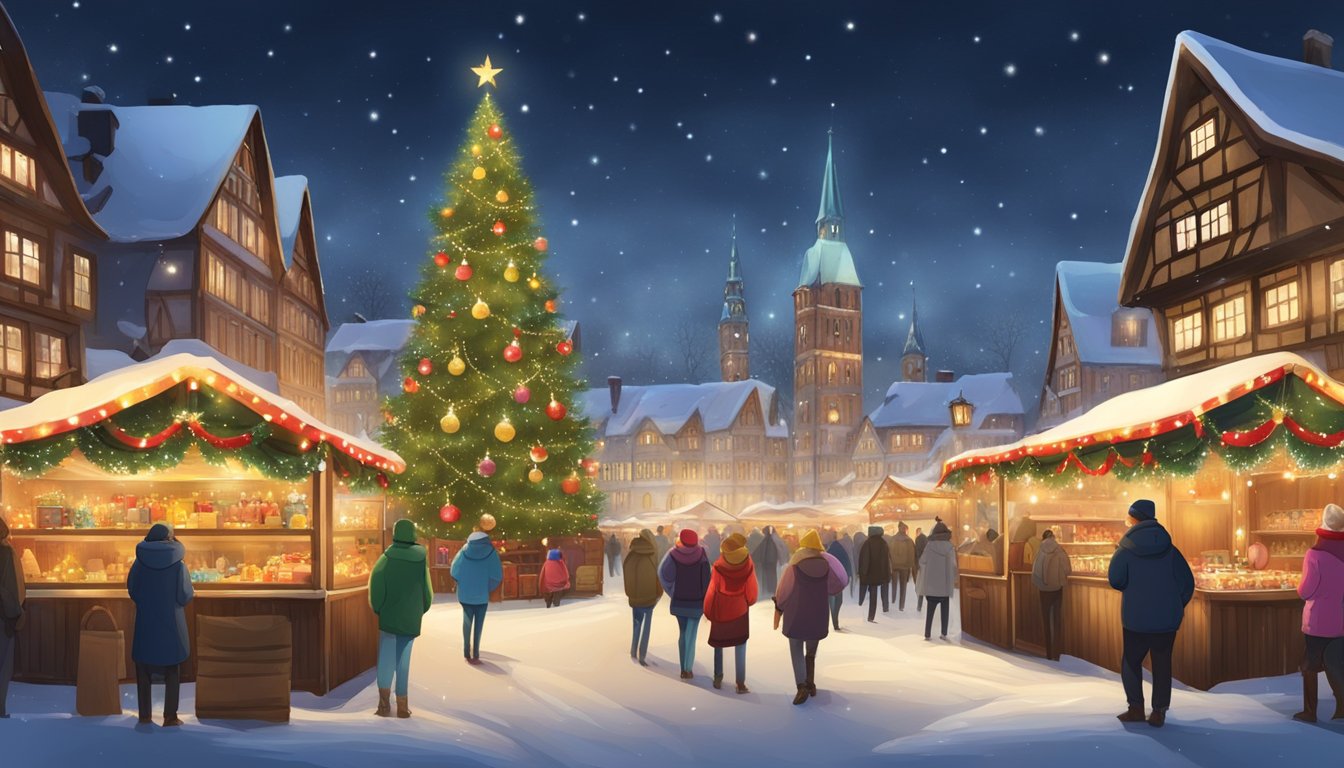
As the festive season approaches, Germany transforms, showcasing a vibrant medley of time-honoured customs and contemporary practices that resonate beyond its borders.
Continuing Traditions into the Modern Age
Germany’s advent period begins with Weihnachten, a celebration deeply rooted in cultural traditions.
Families nationwide erect Christmas trees, often opting for sustainable, rented trees replanted post-holiday.
Markets like Dresden’s Striezelmarkt brim with festivity, with ornamented stalls offering a myriad of seasonal crafts and treats.
A notable export, the Herrnhut star, originating in Saxony, now illuminates homes across various European countries, symbolizing the vast reach of Germany’s Christmas heritage.
The Legacy of German Christmas Worldwide
German Christmas customs have left an indelible mark on global celebrations.
Advent calendars and Christmas pyramids have found their place in homes worldwide, fostering a spirit of anticipation and joy.
On December 24th, a day recognized as Heiligabend, Germany’s influence is felt as families congregate to exchange gifts, spurring festive cheer across continents.
The tradition of silent, reflective evenings persists, as shops close early and streets fall still, inviting contemplation and family togetherness.
Frequently Asked Questions
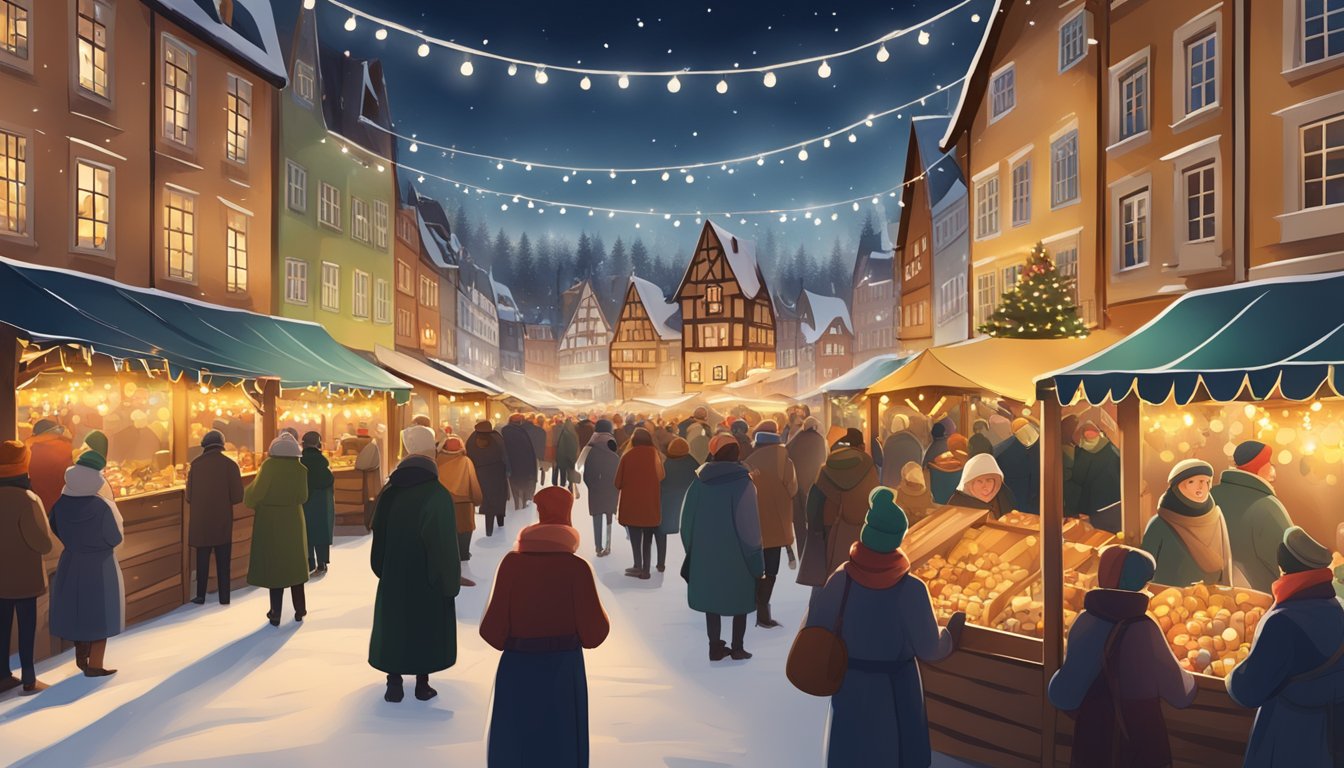
What are some traditional German Christmas customs and practices?
Traditional German Christmas customs include the Advent wreath, Christmas markets, and the Advent calendar.
Germans also cherish unique customs, such as placing shoes outside the door on December 6th, St. Nicholas Day, so that St. Nicholas can fill them with treats.
What typical foods are enjoyed during the Christmas season in Germany?
Germans enjoy a variety of foods during Christmas, including Stollen (fruit loaf), Lebkuchen (gingerbread-like biscuits), and marzipan.
Christmas Eve might feature more straightforward fare like sausages and potato salad, while Christmas Day is often a feast with goose or carp as the main dish.
Which are the best German cities to visit during Christmas?
The best German cities to visit during Christmas for their markets include Nuremberg, Dresden, and Cologne, each offering a distinct festive atmosphere.
Münster is also recommended, known for its five themed Christmas markets.
How do German Christmas celebrations differ from those in the United States?
German Christmas celebrations often begin on the evening of December 24th and continue through December 26th, the Second Day of Christmas.
This contrasts with the U.S., where Christmas Day celebrations are predominant. Germany also emphasizes Christmas markets and traditional customs that are less common in the U.S.
What is the significance of celebrating Christmas on the 24th in Germany?
Christmas Eve, or Heiligabend, is significant in Germany as it marks the beginning of the Christmas celebration.
It is a time for intimate family gatherings and the exchange of gifts, reflecting the anticipation for Christmas Day.
What are some interesting facts about Christmas traditions in Germany?
One interesting fact is that there are over 2,500 Christmas markets across Germany.
Another is the ‘Pfand’ system at Christmas markets. Here, a deposit is paid for a mug when ordering mulled wine, which can be refunded upon returning the mug.
